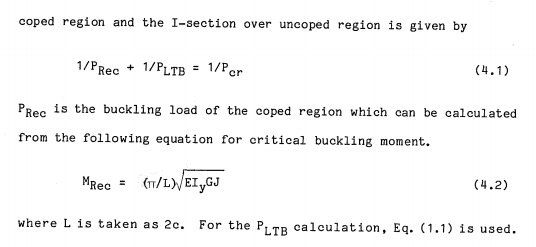Would anyone be able to shed any light on how to best determine member moment capacity for plates being bent such that the narrow edges of plate are the extreme fibres? i.e imagine where a beam consists of the web only of a universal beam/col when bent about major axis without any flanges present. Buckling of compression edge will obviously govern but I cannot deduce how to quantify moment capacity from standards. Particularly with respect to AS4100. An example of the scenario I’m designing for is shown in sketch attached where a deep plate is cantilevering from eave/knee of portal frame. The plate in question is to have timber laminated to each side of plate which will further cantilever. Said timber will no doubt provide ‘some’ buckling resistance but will be considered negligible in this case. An addition of a top flange to make a ‘T’ is not an option.
Thanks in advance for your help.
Thanks in advance for your help.



